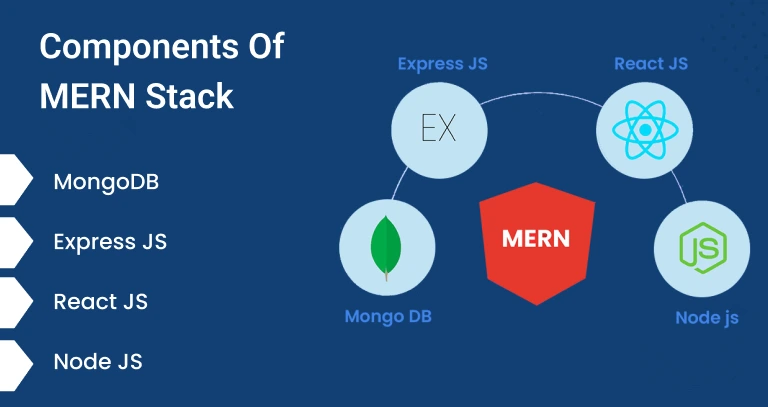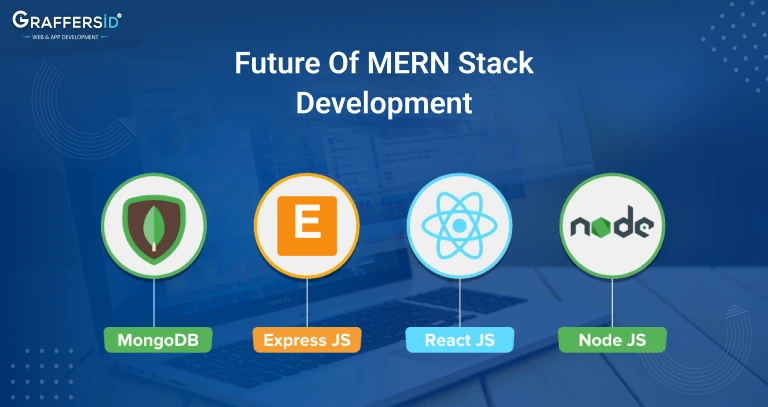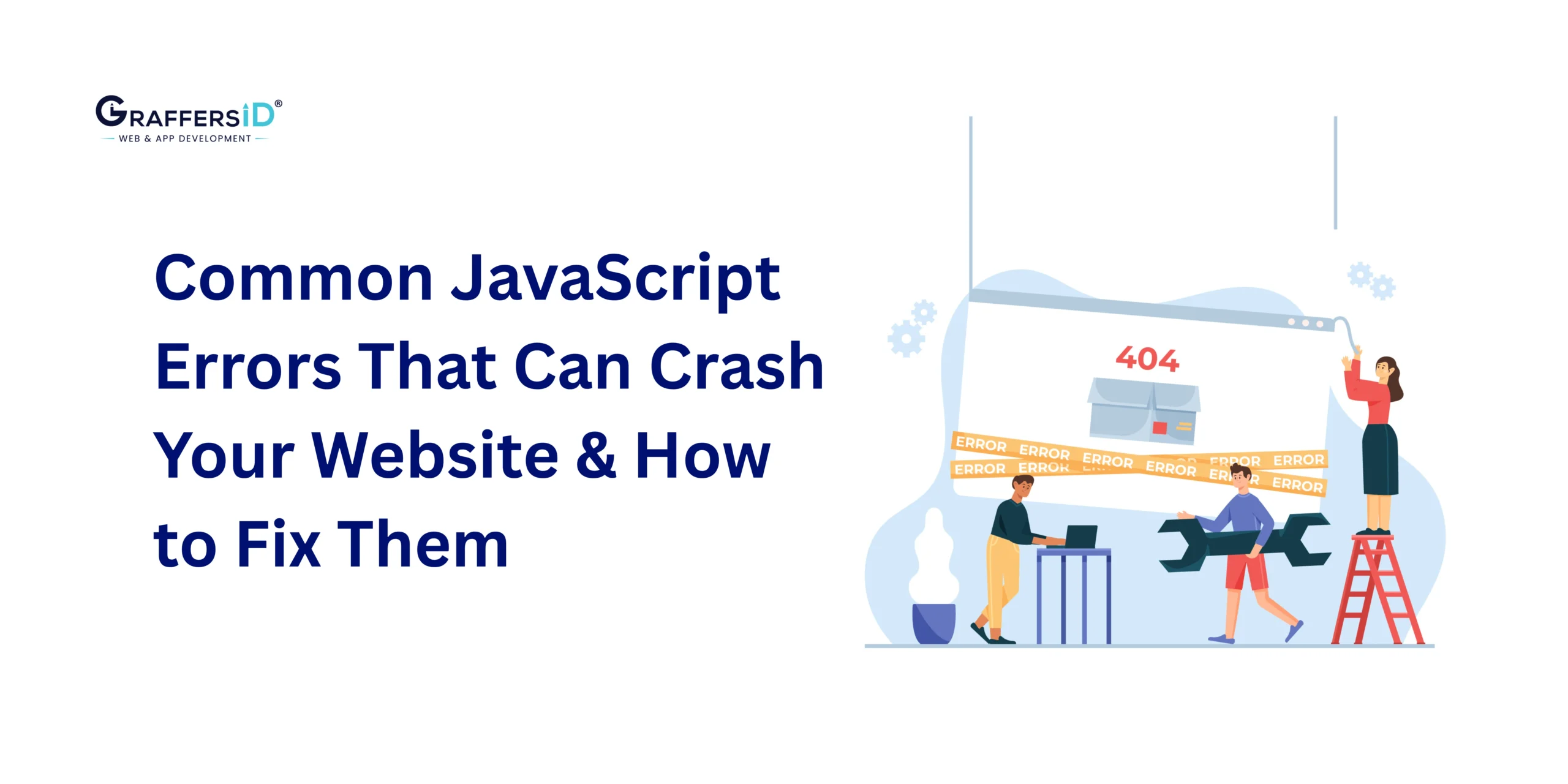If you are not new to the development world, we bet you must have heard about MERN stack development. With the technological advancements in the world, it’s pretty natural to expect your software or mobile applications to have a stunning interface and offer an easy and highly interactive user experience. Factually speaking, unlike in the old days, the audience is smart, especially when it comes to digital technicalities. Therefore, developers work pretty hard to offer a digital asset that will not only satisfy the user’s needs but also offer a seamless experience. The future of MERN stack development lies therein. Developers can use this MERN stack development technology to build high-quality applications and software and keep their audience entertained at all times.
So, if you are wondering if you should stick to MERN, here’s a guide for you. Read on to explore everything related to the MERN stack, its components, benefits, future scope, and what skills to look for when hiring a remote/on-site MERN stack developer.
What Is MERN Stack?
If we get into specifics, MERN is an acronym for MongoDB, Express JS, React JS, and Node JS. In simpler terms, the MERN stack is a combination of these four technologies. MERN is an open-source JavaScript framework developers use to build highly interactive, creative, and responsive web applications and websites. The four technologies that the MERN stack comprises are based on JavaScript. This allows developers to use extra open-source libraries or other elements to develop advanced websites. MERN stack is an open-source framework and is also called a well-known or full-stack development framework.
If we take a deeper dive, Express and Node are used to develop the middle application tier, where Express.JS is a server-side web framework, and Node.JS is a JavaScript server platform. React, on the other hand, is a client-side JavaScript framework well known for its request handling, and MongoDB is a document database.
Developers can use MERN technology to construct a three-tier architecture: front end, back end, and database.
Read Also: Cost to hire mern stack developer
Components Of MERN Stack

The sudden surge in MERN stack demand is probably due to the framework being built on four, different JavaScript technologies. Here are the four main components of the MERN stack:
- MongoDB: MongoDB is an open-source, cross-platform program that can run on multiple servers. This prevents the system from being vulnerable to system failures. Developers can also store data in binary JSON format, thus, facilitating a quick exchange of data.
- Express JS: Express JS is a lightweight, server-side JavaScript framework that is often used to design highly secure and fast applications. It is a favorite choice for its minimal architecture and high speed.
- React JS: React JS is an open-source library powered by JavaScript to create single-page web designs. In addition to being highly scalable and fast, developers can use this technology to use the same code on multiple platforms and create Hybrid designs.
- Node JS: Node.JS is an open-source, cross-platform runtime environment that allows the code to run outside the server without any problem.
The future of MERN stack developers depends upon their proficiency in the above technologies.
MERN Stack Future: Key Benefits
MERN stack development has a higher expectancy to grow in the coming times, particularly because it uses four leading JavaScript technologies to aid with the website or app development process. Here’s why MERN stack demand is expected to be high in the future:

Open-Source Technology
One of the reasons why MERN stack development is a common choice is because MERN can facilitate open-source code. This aids a faster development process and allows your MERN stack remote developers to create highly engaging websites with a high interactivity rate. It also allows developers to employ new changes to the development easily.
Offers a Faster Development Process
Because the MERN stack is an open-source technology, developers are not required to develop a website or an application from scratch. They can use certain templates or already-made designs and add customizations, thus, resulting in a faster development process.
Simple To Use
It is true that a MERN stack developer must be well worse in Express.JS, Node.JS, React and MongoDB. However, with a number of templates and features, the MERN stack is comparatively easy to use to make highly robust applications and websites.
Allows Full-Stack Development
Stating again, the MERN stack is a culmination of the above four frameworks. Each framework offers an added advantage and allows developers to build front-end, back-end, and databases through MERN stack development technology.
Provides the Best Experience
Apart from aiding a faster development process, the MERN stack also allows developers to build highly secure applications. This can be quite beneficial, especially if you are building an app for an industry with high-security regulations, like the finance industry. So, apart from helping developers build fast, it also offers a highly secure and comfortable environment to the users.
Read Also: Mean Stack vs Mern Stack: Which is Better?
Career Opportunities: A relatively Higher MERN Stack Demand
Once developers complete their MERN stack course, they are highly proficient in the four main frameworks of JavaScript. This gives them an edge over the competition and opens paths for great career opportunities.
Depending on their skills and positions, MERN stack developers can earn quite well. In fact, junior developers can start at $85,000 per year as a base salary which can go up to $170,000 annually, once they gather enough experience. On average, MER stack developers can earn around $105,000 per year in the US.
When it comes to freelancing rates, developers are usually hired at a rate of $29 per hour.
What To Look For When Hiring A MERN Stack Developer?
MERN stack developers are usually responsible for writing efficient, testable, and reusable codes for the development and designing of a front-end web application.
For starters, if you are looking to hire a remote MERN stack developer, you must ensure they are highly proficient in MongoDB, Node.JS, React JS, and Express JS. This will allow you to hire a developer who can make a front end, back end, and database. Hiring such developers will give you an edge over your costs and expenses and allow you to rely on a single person rather than appointing a whole team.
In fact, the reason for an increase in MERN stack demand is particularly because it allows companies to build highly engaging, robust, and complex websites easily.
Responsibilities to look for:
Apart from building front-end web applications, interactive consumer databases, and high-performance products, MERN stack developers might also be responsible for translating PSD designs and wireframes into highly functional website applications.
Your developer would be working with the design and development team to brainstorm new development ideas and ensure a proper, highly functional website application design and development.
In short, a MERN stack developer will have responsibilities like:
- Develop functional consumer databases for multiple systems.
- Design and develop front-end web architecture.
- Curate effective code architecture to ensure a smooth and proper development process.
- Translate PSD designs and wireframes into functional apps.
- Collaborate with the design and development team to ensure everything is in sync.
- Curating highly functional databases and web applications.
- Software testing to ensure efficiency.
- Be a part of project planning and design ideation.
- Adhere to any technical issues during the development or design process.
Skills needed:
Apart from an in-depth knowledge of the four components of MERN, the developer you hire must also be able to combine different UI elements with the JavaScript object models. They should also have experience in creating RESTful services with node.JS and should be well-versed in OOP and database concepts.
The developer should have proven experience in front-end and back-end development and use HTML5, LESS, SASS and Angular to build applications.
In addition to this, a MERN stack developer should also have enough knowledge about the modern framework, and design patterns and should have the ability to curate units and integration tests for testing purposes.
If we talk about soft skills, they should have a team working, analytical, problem-solving, and self-motivation skills. Here’s an idea of the skill set required for a MERN stack developer:
- Knowledge of React.JS, Express.JS, Node.JS, and Resitfy.
- An ability to bind different UI elements.
- Using Node.JS to build RESTful services.
- Proficiency in database and OOP concepts.
- Experience in building front-end applications with the help of HTML5, SASS, LESS, and Angular.
Background needed:
A MERN stack developer should have at least a bachelor’s degree in computer science, IT, or a related field.
Career Scope & Future of MERN Stack Developers
MERN stack developers are in high demand in the tech industry due to their ability to develop full-stack web applications. MERN stands for MongoDB, Express, React, and Node.js. These four technologies together allow developers to create powerful web applications from scratch with a single language – JavaScript.
MERN stack developers have a bright future ahead of them as more and more companies are embracing the idea of full-stack development. With the increasing demand for web applications, MERN stack developers can expect to find plenty of job opportunities in the near future. They will also be able to benefit from the ever-evolving technology landscape as they will be able to stay up-to-date with new tools and techniques that come out on a regular basis.
Future Of MERN Stack Development
With high speed, better components, and an easy development process, MERN stack development is perhaps the future of full-stack development. Apart from helping companies build highly interactive app designs, it also offers a unique and highly engaging user experience.
Trends and Developments for the future of MERN stack development
Enhanced Developer Experience:
The MERN stack is likely to see improvements in developer experience with the emergence of better tools, libraries, and frameworks. This could include more advanced debugging tools, improved integration between different parts of the stack, and enhanced code generation utilities.
Real-time Capabilities:
Real-time functionality is becoming increasingly important in web applications. Integrating technologies like WebSockets and server-sent events within the MERN stack can allow for more interactive and dynamic user experiences.
Microservices Architecture:
As applications grow in complexity, a move towards a microservices architecture could become more common. Node.js, with its non-blocking I/O, could play a significant role in creating scalable and modular backends for microservices-based applications within the MERN stack.
Serverless Computing:
Serverless architecture abstracts server management and allows developers to focus on writing code. The MERN stack could leverage serverless platforms like AWS Lambda or Azure Functions for specific use cases, reducing the need for infrastructure management.
Integration of AI and ML:
Integrating Artificial Intelligence (AI) and Machine Learning (ML) functionalities into web applications is on the rise. The MERN stack might see more libraries and tools that facilitate the integration of AI and ML capabilities seamlessly.
GraphQL Adoption:
While traditionally REST APIs have been used for communication between front-end and back-end, GraphQL offers more flexibility and efficiency by allowing clients to request only the data they need. The MERN stack might see increased adoption of GraphQL as an alternative to traditional REST APIs.
Progressive Web Apps (PWAs):
PWAs offer a way to create web applications that behave like native apps. As PWAs continue to gain traction, the MERN stack could incorporate more tools and best practices for building high-quality PWAs.
Focus on Security:
With the increasing frequency of cybersecurity threats, the MERN stack’s future might involve more emphasis on security practices and built-in security features to ensure the protection of user data and application integrity.
Cross-platform Development:
The demand for applications that work seamlessly across various devices and platforms could lead to the development of more tools and frameworks that enable cross-platform capabilities within the MERN stack.
Community and Ecosystem Growth:
The strength of any technology stack lies in its community and ecosystem. The MERN stack will likely continue to see growth in terms of available libraries, tutorials, and resources, which will aid developers in building applications more efficiently.
Is MERN stack in demand?
In the world of web development, technologies come and go, but some manage to stand the test of time. One such technology stack that has consistently held its ground is the MERN stack. Comprising MongoDB, Express.js, React, and Node.js, the MERN stack has been a favorite among developers for its flexibility, efficiency, and ability to build powerful web applications. But the question remains: Is the MERN stack still in demand in today’s rapidly evolving tech landscape? Let’s delve into the factors that continue to make the MERN stack a sought-after choice for developers and businesses alike.
1. React’s Dominance in Front-End Development
React, a JavaScript library developed by Facebook has emerged as a cornerstone of modern front-end development. Its component-based architecture, virtual DOM, and reactive updates have revolutionized how developers build user interfaces. With a strong and active community, React continually evolves, introducing features like hooks and context API to enhance development efficiency. The demand for React developers remains high, as companies seek to deliver interactive and engaging user experiences across devices.
2. Node.js and Express.js for Server-Side Efficiency
Node.js, built on Chrome’s V8 JavaScript engine, has brought JavaScript to the server side. Its non-blocking I/O model and event-driven architecture enable scalable and performant server-side applications. When paired with Express.js, a lightweight and flexible web application framework, developers can create robust APIs and backend services. The asynchronous nature of Node.js suits real-time applications and has gained popularity in microservices architectures, further boosting the demand for Node.js and Express.js expertise.
3. MongoDB’s NoSQL Advantage
MongoDB, a NoSQL database, is an integral part of the MERN stack. Its schema-less design and flexible document-based model make it well-suited for agile development and handling large volumes of unstructured data. As businesses increasingly rely on data-driven decisions, MongoDB’s ability to handle complex data structures and its horizontal scalability make it a preferred choice for applications dealing with diverse data sources.
4. Full Stack Capabilities and Developer Efficiency
One of the MERN stack’s compelling features is its ability to offer developers both front-end and back-end tools within a unified environment. This full-stack approach simplifies the development process, reduces communication overhead, and accelerates project timelines. Developers proficient in the MERN stack can seamlessly switch between different layers of the application, which is particularly valuable in startups and small teams where versatility is key.
5. Market Demand and Job Opportunities
The demand for MERN stack developers remains strong due to its widespread adoption across industries. Startups, enterprises, and tech giants alike utilize the MERN stack to create modern, scalable, and feature-rich applications. Job portals and professional networking platforms consistently list MERN-related skills as high demand, reflecting the ongoing need for developers who can architect, build, and maintain applications in this stack.
6. Ecosystem and Community Support
The success of any technology is closely tied to its ecosystem and community. The MERN stack benefits from a vast collection of libraries, frameworks, and tools developed by a thriving community of developers. This ecosystem promotes knowledge sharing, best practices, and rapid innovation, making it easier for newcomers to learn and for experienced developers to stay up-to-date with the latest trends.
Hire Remote MERN Developers With GraffersID
Are you looking to hire remote MERN developers? Fill out the below form to contact us today and hire right. We help you to shortlist the true talent around the globe which allows you to hire highly professional MERN remote developers willing to offer you their expert insights into the development process.




